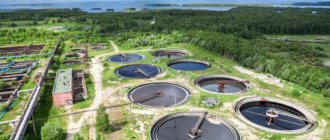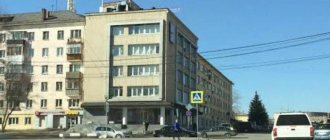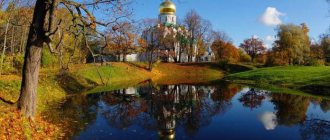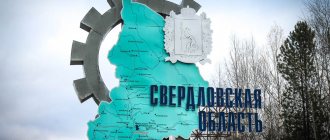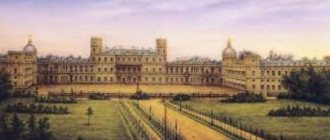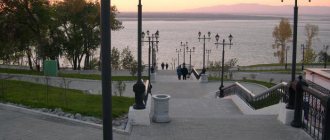The city of Kovrov will quickly help you find a map of Kovrov from a satellite. This city is located on the banks of the Klyazma River. It belongs to the territory of the Vladimir region. The city received its name from the surnames of the Kovrov princes in the 16th century, who owned it. When going on a trip around the city, it is worth using a map of Kovrov with streets in good quality. The map will help you find the object you are interested in very quickly and will save a lot of free time. Kovrov is a small but very beautiful city with magnificent natural scenery.
History of the locality
The first settlement, according to documentary information, appeared on the banks of the Klyazma River back in the 12th century. Thanks to Prince Yuri Dolgorukov, this place was dubbed the village of Elifanovka, in honor of the trapper Elifan, who lived among the first settlers. Later, due to a typo, the village began to be called Epifanovka. The settlement was mentioned under a distorted name in local history publications until the beginning of the 21st century.
The name Epifanovka did not live long. Soon the village of Rozhdestvenskoye appeared. There is an interesting legend. At the beginning of the 12th century, Prince Andrei Bogolyubsky was returning from Suzdal to Starodub and was caught on the road by a severe blizzard. The prince lost his way and after several hours of wandering he came to the village of Epifanovka. And these events took place on the eve of the Nativity of Christ. On the occasion of his salvation, the prince ordered the construction of a Nativity Church in the village. And the construction was headed by the son of that same trapper Eliphan. Soon the village became part of the Starodub principality.
The settlement developed rapidly, the population grew. In the 16th century, the village was given over to Prince Kovrov, who belonged to the Starodubsky family. The city of Kovrov was named after the new owners.
A completely new page in the history of the settlement began during the reign of Catherine II. It was by her decree that in 1778 Kovrovy Uyezd was included in the Vladimir Viceroyalty. At this time, the village received the status of a county town. Kovrov developed rapidly. The population grew rapidly. Already in 1817, the city had about 1,000 inhabitants and had two churches.
In 1858, construction began on railway tracks that ran half a mile from the settlement. Thanks to this, the city's population increased significantly. The workers who took part in the construction remained to live in Kovrov.
Kovrov (Vladimir region) is a city that has everything a modern person needs. These are excellent schools, kindergartens, cultural centers, attractions. And in 2011, the settlement was awarded the title “city of military glory.”
Kovrov
Kovrov, the City of Military Glory, is the administrative center of the Kovrov district and the second (after Vladimir) city in the Vladimir region by population - 138,552 people (2017). Kovrov is located on both banks of the Klyazma River, 64 km northeast of Vladimir. The city is a major railway junction on the Moscow (250 km to Kovrov) – Nizhny Novgorod highway, and has access to the M-7 Volga highway.
Story
Although Kovrov received city status only about 240 years ago, its age is much more respectable. According to legend, in 1157, the Vladimir prince Andrei Bogolyubsky, returning in winter from Suzdal to Starodub (now the village of Klyazminsky Gorodok, Kovrov district), got lost in the local forests and accidentally came to the hut of the trapper Elifan. In honor of the miraculous salvation of the prince at Christmas, the wooden Church of the Nativity of Christ was cut down on the high Klyazma bank. Based on the name of this temple, the village of Elifanovka located here began to be called the village of Rozhdestvenskoye. In the 13th century. The village became part of the Starodub principality.
From the end of the 15th century. Rozhdestvenskoye passes into the possession of the Starodubsky-Kovrov princes. The nickname of the princely family of Starodubsky “Carpets”, according to legend, appeared with the light hand of Prince Dmitry Donskoy after during the Battle of Kulikovo in 1380 A.F. Starodubsky carried the Khan's expensive carpet out of the enemy camp. It was this princely nickname that gave the new name to the Rozhdestvensky village - Kovrovo.
In 1567, the village of Kovrovo was donated by Prince I.S. Kovrov to the Suzdal Spaso-Evfimiev Monastery ,
and was in his patrimony for more than two centuries - until 1774. The area around the village was rich in limestone deposits, the development of which has long been one of the main occupations of the Kovrov residents. In particular, the buildings of the Spaso-Evfimiev and Pokrovsky monasteries in Suzdal were erected from Kovrov white stone.
The village of Kovrovo had a fairly advantageous location on the banks of the navigable Klyazma River. In this place there was a constant transport through Klyazma on the busy Nizhny Novgorod trade route. A trade transhipment pier was created near the village of Kovrovo, where bread, fish, salt and other products, forest materials, and handicrafts were brought from everywhere.
All this contributed to the acquisition of urban status by the village of Kovrov. On September 1, 1778, Empress Catherine II signed a decree establishing the district town of Kovrov in the Vladimir governorship. In 1781, it already had its own coat of arms as a city privilege. There is a legend that the Tsar's governor, Count Vorontsov, was very fond of hunting hares in the Kovrov forests. It was he who proposed to depict these animals on the Kovrov coat of arms next to the emblem of Vladimir - the lion.
Until the middle of the 19th century. Kovrov was a quiet provincial town. The industrial and commercial development of the city was facilitated by the construction of the Nizhny Novgorod railway, traffic on which was opened in 1862. At the same time, central railway workshops appeared in Kovrov, which became famous in Russia. Here, freight and passenger cars were created, which were awarded at the end of the 19th century. highest awards at industrial exhibitions in Moscow and St. Petersburg. In addition, the first ambulance trains were produced in the Kovrov workshops. During the First World War, Kovrov was one of the formation points for military ambulance trains, each of which could receive up to 400 wounded. In 1929, the railway workshops were repurposed into a mechanical repair plant, which carried out orders for the repair of imported excavators, and in 1931 - into the Kovrov Excavator Plant, which became the first manufacturer of domestic Kovrovets excavators.
By the beginning of the 20th century. Kovrov had already become a major industrial center of the Vladimir province with a population of 14,571 people (according to the results of the first All-Russian census of 1897). Along with the railway workshops, a large steam-powered calico and weaving factory of the merchant I.A. operated in the city. Treumova, an iron foundry, numerous brick factories, a steam mill, a sawmill.
In 1916, construction began on the Kovrov Machine Gun Plant. The real development of the plant since 1918 was associated with the activities of the outstanding scientist V.G. Fedorov, the inventor of the world's first assault rifle, and the outstanding designer of automatic weapons V.A. Degtyarev, who headed the plant’s design bureau until his death in 1949. There is a memorial house-museum of V.A. in Kovrov. Degtyarev, whose exhibition tells about his life and design activities. In 1949, the plant received a new name - Plant named after. V.A. Degtyarev (today it produces not only defense, but also civilian products, for example, motorcycles). During the Great Patriotic War, the plant became the country's main enterprise for the production of anti-tank and other types of weapons for the front.
Carpets during the Great Patriotic War
It is difficult to overestimate Kovrov's contribution to the Great Victory. 13 Heroes of the Soviet Union brought glory to the city (L.V. Lopatin, I.S. Nosov, V.A. Burmatov, I.V. Pershutov, F.G. Konkov, V.I. Yastrebtsov, A.P. Generalov, P.K. Rangev, V.G. Kabanov, P.S. Mashtakov, V.A. Zaevsky, A.P. Martynov, G.V. Provanov). All large enterprises of Kovrov were reoriented towards military production. There were many hospitals in the city, since it was located in the rear near the front line. In November 2011, by decree of the President of the Russian Federation, Kovrov was awarded the honorary title “City of Military Glory.” In November 2013, on the square in front of the central entrance of JSC Plant named after V.A. Degtyarev" stele "City of Military Glory" was installed.
In 2012, in connection with the awarding of this title to Kovrov, it was decided to adjust the coat of arms taking into account the recommendations of the Heraldic Council under the President of the Russian Federation. Instead of a red ribbon, the coat of arms is now surrounded by a white and blue order ribbon - a sign that in 1978 Kovrov was awarded the Order of the Red Banner of Labor. The golden tower crown with five teeth is an indicator of the status of the urban district. The swords crossed behind the crown symbolize the title “City of Military Glory” awarded to Kovrov.
Economy
Modern Kovrov is a large industrial and scientific center of Russia, primarily in the defense industry, mechanical engineering and metalworking. Enterprises in these industries create over 70% of the city’s total industrial output and employ about 40% of the city’s working population.
OJSC "Plant named after Degtyarev" (ZiD) today is a diversified enterprise that produces not only defense products (small arms, anti-tank and missile weapons), but also motor vehicles (motorcycles, motorized towing vehicles, scooters), soil-cultivating equipment, food industry equipment, LED lamps. PJSC Kovrov Mechanical Plant (KEP) is one of the leading enterprises in the Russian nuclear industry, since 2007 specializing in the manufacture of high-tech and technically complex products - gas centrifuges (devices for separating uranium isotopes). The main specialization of OJSC Kovrov Electromechanical Plant (KEMZ) is hydraulic equipment, and the plant also produces multifunctional mobile robotic systems, used, in particular, for searching and remotely neutralizing explosive devices. In 2022, KEMZ began production of a new model range of Zetor Forterra (“ANT 4135F”) tractors as part of the import substitution program. VNII "Signal" is engaged in the development and production of defense hydraulics and electronics. Design Bureau "Armatura", since 1997 part of the State Space Research and Production Center named after. M.V. Khrunichev, works in the field of development and manufacturing of units and systems of ground infrastructure of rocket and space complexes, as well as pneumatic hydraulic systems of launch vehicles.
Among the light industry enterprises in Kovrov there are such well-known in Russia, producing men's suits, "Ascona" - the largest manufacturer of orthopedic mattresses, etc. In the 1990s, the ancient pottery craft was revived, in 1993 the Kovrov Clay Toy factory was founded, received the status of folk art.
Famous people
The names of many famous people of Russia are associated with the city of Kovrov. Famous gunsmith designers V.A. lived and worked here. Degtyarev (1879/1880-1949), V.G. Fedorov (1874-1966), G.S. Shpagin (1897-1952). A native of Kovrov was I.M. Yatsunsky (1916-1983), Soviet scientist, one of the creators of the first artificial Earth satellite, is recognized as the founder of space geodesy. Born in Kovrov: A.M. Kolesov (1834-1902), Russian portrait painter; S.K. Nikitin (1926-1973), famous Soviet writer; A.P. Nepomniachtchi (1968-2007), popular bard, rock musician, etc.
Sports resort Dobrograd
Today, of interest to tourists and guests of Kovrov is the Dobrograd sports resort, which is located on the territory of one of the first private cities in Russia and is a unique object of public-private partnership. In September 2016, the VI International Sports Forum “Russia – a Sports Power” was held in Dobrograd.
Author: V. Korolkova
Population
How the number of people living in the city changed can be traced through the history of Kovrov. A rapid influx of people here has been observed since the construction of the railway began. In 1856 there were more than 2,000 people here, and within 100 years this figure had grown to impressive proportions. In 1959, the official population was already more than 98 thousand.
The largest population here was observed in the early 90s. At that time, more than 162 thousand people lived here. Then, due to the emergency and economic crisis, Kovrov’s birth rate decreased significantly. The population began to decline. According to the latest data, only 138 thousand people live here. Today the city ranks 128th in terms of population in Russia.
Culture
Throughout its history, the city has developed comprehensively. In 2004, the largest International Esperanto Youth Congress was held here, in which children from 23 countries took part. The congress was widely covered in the press. The event was supported by the local administration and private entrepreneurs. Choosing a city to host an Esperanto Youth Congress is a responsible undertaking. And the fact that Kovrov was chosen indicates that the city is truly culturally developed.
There are several cultural institutions in the city. Great importance is attached to the development of the younger generation. There are two art schools, two children's cultural centers, and two cultural palaces. There is also an excellent library system, thanks to which schoolchildren and applicants receive high-quality knowledge. You can hear a lot of good reviews about the family reading library, which anyone can sign up for.
A real landmark of the city is the Kovrov Historical and Memorial Museum. This is not just a place where reminders of the formation of a settlement are collected. It is also a wonderful architectural monument. To get here, you will have to bypass the center of Kovrov and go to the northern part of the city. The museum is located at 20 Abelman Street. The institution was opened in March 1927. The Center for Historical Local History is actively developing. Thanks to the work of the museum, the modern generation can learn the history of the city.
Exhibitions not dedicated to local history are periodically held on the territory of the museum. Thus, you can hear a lot of good reviews about the exhibition “The World of Clay Toys”. Anyone can exhibit their works. The stationary exhibition “The World of Birds and Animals of Our Region” is also popular.
The culture of Kovrov is multifaceted. Six members of the Union of Artists of Russia work and live here. Every year the city hosts the international festival “Commonwealth”.
Map of Kovrov with houses
Kovrov is more than several hundred years old, but there are not enough attractions in this city. It belongs to the famous “Golden Ring”. A map of Kovrov with house numbers will help you find any interesting object.
We especially recommend visiting the following sites:
- On Victory Square there is a monument dedicated to the 200th anniversary of the city.
- There is an abundance of churches in the city, but the most majestic is the Nativity Cathedral. Its history begins in 1160, but then it was still a small wooden church. A map of Kovrov with streets and houses will help you find this cathedral.
- The churches of St. John the Warrior, Znamenskaya and Trinity also operate in the city territory.
- It is worth visiting the Znamensky Convent.
- One of the interesting attractions is the Dyagterev Museum. It represents the home of this great gunsmith. The museum preserves his office and workshop in their original form.
- On the map of Kovrov with streets you can see the historical and memorial museum.
- If you are walking around the city with children, be sure to stop by the hare museum. This is an interesting place that contains a wide variety of images of hares. There are many of these animals in the vicinity of the city. The hare is also depicted on the city coat of arms.
- One of the notable places in the city is Pushkin Park. It is small, but very beautiful and cozy. Yandex maps of Kovrov will help you create the best route.
- History buffs are recommended to visit the Klyazmensky town, where there is a ruined fortification from the 12th century and the Intercession Church of the 19th century, made in the old Russian style.
The city also offers a variety of cafes, restaurants and snack bars to suit every taste.
Educational institutions
Today there are 46 kindergartens and 19 schools in Kovrov. Reviews show that there are no problems with registering a child in a preschool institution; there are enough places for everyone. More than 6,000 children are educated in kindergartens, and about 13,000 children study in schools.
Educational institutions in the city of Kovrov are not only schools. There are also technical schools here, which provide a high-quality basis for entering universities. And in 1996, the Kovrov State Technological Academy began its work. Thanks to this, today not only residents of Kovrov, but also children from nearby regions can receive high-quality higher education. Many applicants choose this particular institution due to the fact that studying here is much cheaper than in capital universities.
Today the Academy is the leading educational institution in the Vladimir region. The main focus is training qualified engineers. In addition, employees who have long since completed their studies at the university can improve their qualifications here. Training is carried out in 15 higher profile specialties. There is also the opportunity to receive secondary specialized education. The Faculty of Economics has remained the most popular for several years now. To receive a free education, you must pass a competition. The university offers preparatory courses for applicants.
Many children specially come to Kovrov to get a quality education. The population remains stable due to the influx of out-of-town applicants. The university also has a military department, which graduates reserve officers.
Industry and economics
Kovrov is a major industrial center. What is the price of the Degtyarev plant! Here they manufacture high-quality small arms and missile weapons, motorcycles, mopeds, sewing machines, etc. Today, the entire industry of Kovrov rests on this company. Construction of the plant began in 1916. Initially it was a rifle and machine gun factory, the main defense institution of the city. Nowadays, special equipment for the food industry is also manufactured here.
The Kovrov Mechanical Plant can also be called the pride of the city. Small arms, glass cutting equipment, solar panels, and equipment for nuclear power plants are also manufactured here.
The Kovrov Electromechanical Plant produces hydraulic drive equipment, as well as defense robotics. The excavator plant produces high-quality agricultural equipment. In 2011, a monument to the excavator was erected in the city. The enterprises described occupy more than 70% of the city's total industry. About 50% of Kovrov’s working-age population is employed here.
The light industry sector is also thriving here. LLC produces consumer goods from plastic. These are garden goods, snow shovels, children's plastic skis, etc. A lot of good reviews can be heard about the Sudar clothing factory, which specializes in the production of men's suits.
Transport
The economy of Kovrov remains at a stable level due to the Moscow-Nizhny Novgorod railway passing through the city. There is heavy traffic of passenger and freight trains in this direction. The railway here is electrified. In the winter of 2003, a modern railway station began operating in the City, construction of which began in 1991. Its design capacity is 900 passengers. The total area of the building is more than 5000 square meters.
From the city you can go onto a federal highway. Within the boundaries of the settlement there are railway and road bridges across the Klyazma.
Kovrov's urban transport deserves special attention. The first buses in Kovrov appeared before the Great Patriotic War, in 1935. Initially, there was only one bus running around the city. The second urban vehicle appeared already in 1936. In 2012, the Kovrov bus system was completely updated. New routes have appeared. Today residents can get not only to the center of Kovrov, but also to remote parts of the village.
There is also trolleybus service in the city. The first vehicles from this category began plying around the city in 1975. However, this area in Kovrov is not sufficiently developed. At the end of 2011, trolleybuses operated on only four routes. In 2012, two more routes were opened.
Map of Kovrov with streets
There are no districts in this city at all, but the map of Kovrov by district is still useful, since it displays a detailed layout of the city.
Geographically, it is divided into avenues and streets. Throughout the entire territory of the Kovrovsky district there are several rural-type settlements.
Unofficially, the city is divided into microdistricts with corresponding bus and trolleybus routes. For example, district six covers its route with a bus with the same number.
Also, among the people, the territory was divided into 2 microdistricts: northern and southern. The Kovrov map scheme will allow you to move around the city without any problems.
Each microdistrict has its own educational institutions, hospitals and various shopping facilities.
An important railway line passes through the city. Trains going to Siberia or the Urals pass by.
High-speed electric trains also run along this line. Just recently, a new train station was built, which can accommodate more than 900 people at a time. Using Kovrov's routes you can find important roads on the map. This is the exit to the leading road Moscow - Kazan, Kovrov - Ivanovo. Inside the city there are 2 bridges across the Klyazma: railway and for motorists. You can get around the city using buses and trolleybuses.
Sports achivments
In the city of Kovrov, Vladimir region, motorcycle sports are well developed. At the same time, the training of young racers begins at a young age. Many boys dream of learning to drive a two-wheeler. Of great interest is motorball, a rare sport in which football is played on motorcycles. In addition, the city has special markings for motocross racing.
There is a football club in Kovrov. The city's population follows the achievements of local football players. The Kovrovets club was founded back in 1923. During the Soviet era, he took part in many championships among masters and took prizes. In 1995, the club managed to win the championship in the Golden Ring interregional championship. Now “Kovrovets” takes an active part in regional competitions. And some students went up the career ladder and got into federal football teams.
In Kovrov, great attention is paid to children's sports. From the age of 5, children can enroll in a sports dance club. From the age of 7-8 you can start going to athletics, fencing, Greco-Roman wrestling, gymnastics, etc.
Extreme sports are also developing in Kovrov. So, in 2014, a winch for wakeboarding was installed on a local river.
Mass media
Five newspapers are published in Kovrov. The most popular publication can be called “Carpet News”. The newspaper has a circulation of 19 thousand copies. It also has its own portal. Here city residents can find out the latest news, study advertisements for real estate sales, vacancies, etc.
The following periodicals are also published in Kovrov: “Znamya Truda”, “Kovrovskaya Week”, “Echo of the Week”, “Degtyarevets”. There are also 12 radio stations broadcasting in the city. However, Kovrov does not have its own station.
There are 7 analogue TV channels broadcasting in the village. Every city resident has the opportunity to install digital or cable television. In 2014, the city began broadcasting its own channel “Our Region 33”. This is the first channel in the region with its own programming. The advantage is that the broadcast goes on around the clock. Here you can find out all the news from Kovrov. The public can watch programs without connecting to cable television.
“Our Region 33” is a channel that creates interesting programs in various formats. This includes news, programs for children, and entertainment shows. You can hear a lot of good reviews about the program “It’s not evening yet.” Guests include politicians, creative intellectuals, city emergency workers and other interesting residents of Kovrov.
City `s history
Located on the high, right bank of the Klyazma River. Historical and statistical description of the city of Kovrov (Vladimir province) with the district. Compiled by I.F. Tokmakov (1903) The city of Kovrov has been known from Russian Chronicles since 1506. On the site of the current city was the village of Epifanovka , founded, according to legend, by some trapper Epifan in the 12th century (around 1187). Subsequently, the village was renamed the village of Rozhdestvennoye , and in the 16th century (around 1506) it belonged to the Kovrov princes, from whom it received its current name. Princes Kovrovs - from the genealogical book published according to the most accurate lists, part 2, Moscow, 1787, pp. 300, 327, 413, it is clear that the princes Kovrovs descended from the Starodub princes, their genealogy in the painting of the Gagarins, under No. 19, is also confirmed p. 238 Russian genealogy book, published by Prince. P. Dolgorukov, part 1, St. Petersburg, 1854, which says that Prince Vasily Andreevich Kovrov, the son of Andrei Fedorovich Starodubsky, Prince Ivan Vsevolodovich Starodubsky was the appanage prince of Starodub-Vladimirsky, (and not Starodub-Seversky, as some mistakenly believe). Starodub on the Klyazma River, 12 versts from Kovrov, now this area is included in the Kovrov district and is called the Klyazemsky town. In the first half of the 17th century, the village was the patrimony of the Suzdal Spaso-Evfimievsky Monastery, which was donated by Prince Ivan Kovrov (according to the monastery documents). With the establishment of monastic states in 1764, Kovrovo was made an economic village, and in 1778 it was renamed a district town; in 1796, the city was left behind the state (a provincial town), but in 1803 it was restored again. In the city, with the most thorough archaeological investigations, it is impossible to find anything inherited from antiquity in favor of history, except for five gravestones of white stone in the general cemetery at the church of the Holy Great Martyr John the Warrior, among a separate fence (after the revolution it was destroyed by the forces of militant atheists, encouraged by the authorities) . The following inscriptions were carved on them:
- Summer 7049 (1541) - the servant of God, Prince Andrei Vasilyevich Kovrov, died on Voroncha.
- His son (his years are not visible, but half a stone) Vasilyevich Kovrov has passed away.
- On the 13th day of the summer of 7059 (1551) in the month of November, in memory of John Chrysostom, the servant of God Fyodor Nikitin, Prince, reposed.
- 7049 (1541) Prince Dimitri died (then the words were erased)
- In the summer of 7070 (1532), in memory of our reverend father... the servant of God, Prince Vasily Ivanovich Kovrov, reposed.
These passages turn us to history, according to which the name of the princes Kovrov or Kovrovs appears for the first time in 1505, in the person of Vasily Andreevich, who, under Grand Duke John, was the 3rd first Russian governor in the newly acquired glorious Biarmia or great Perm. His sons: Andrei, Ivan and Semyon Vasilyevich, of whom the first, who died in Voronach, near the city of Polotsk region, which was 100 versts from Pskov, was probably there under the governor of Pskov, Prince Peter Ryapolovsky (whose fatherland the village of Ryapolovo is still located in Kovrov district ), sent by Emperor Vasily Ioanovich in 1523 with the children of boyars and Tatars during the era of the destruction of the Order of German knights and the annexation of Smolensk to Russia. In 1536, these brothers divided their family estate, from which Prince Semyon Vasilyevich received the village of Rozhdestvenskoye and Kovrovo. In 1566, on July 2, as can be seen from the sentencing letter, there was Prince Osip Andreevich Kovrov. This village of Kovrovo in 1567 by the son of Prince Semyon, John under Archimandrite Savvatia was attached to the Suzdal Spaso-Evfimevsky Monastery in 1578 by the widow after Prince Vasily Ivanovich, nee Maria Mezetskaya (Princess Maria Semenovna Mezetskaya (Meshchovsky) daughter of Prince Semyon Mikhailovich, a participant in the campaigns to the prince Vasily's marriage 3, was married to Prince Vasily Ivanovich Kovrov. Attached to the same monastery: Seltso Andreevskoe; Villages: Suvorikha, Sassanova, Ugryumov, Frolovo with wastelands, forest, fishing and beaver fishing. For this grandson of Prince Andrei Vasilyevich in 1547, the prince Nikita, the son of Prince Ivan Andreevich, villages and wastelands were annexed to the Spaso-Evfimievsky Monastery under Archimandrite Job: Sadishchi; Kavrizino; Ivanino; Shchedrino: Vatino; and in 1577, Prince Nikita’s cousin, Prince Ivan, son of Joseph Andreevich, annexed the village of Shishovka and the village of Zurneva with wastelands. In 1568-1569 there was Prince Yuri Vasilyevich Kovrov. In the 17th century, there was a customs in the village of Kovrov, despite the fact that trading was carried out once a year, on Christmas Day, when merchants from different cities gathered with all sorts of goods . In 1657, it was ordered to establish a permanent market in Kovrov, because various people from Kazan and Kazan cities walked through the city.
Temples of Kovrov
Nativity of Christ Cathedral Address: st. Pershutova, 15,
Nativity of Christ Cathedral
It is unknown when and by whom it was built, the building is made of stone, the bell tower and fence are also made of stone. Thrones: the main one in honor of the Nativity of Christ (celebration on December 25), the Southern chapel in honor of the Smolensk Icon of the Mother of God (celebration on July 28 and October 12), the North in the name of St. Macarius, Abbot of Kalyazin (celebration on March 17).
Spaso-Preobrazhensky Cathedral Address: st. Pershutova, 28
Altars: the main one of the Transfiguration of the Lord (celebration on August 6), side altars: southern - in the name of St. Nicholas the Wonderworker (celebration on May 9 and December 6), northern - in honor of the icon of the Mother of God, called “Joy of All Who Sorrow” (celebration on October 24. In the cathedral there is an icon of the Exaltation of the Honest and Life-Giving Cross of the Lord, in which there is a small silver-gilded cross with particles of the relics of the Holy Great Martyrs Barbara and Anastasia the Pattern-Writer, the Martyr Natalia, the Great Martyrs: Fyodor Tirov and John of Belgrade and the Venerable Avramius of Galich; this cross is attached to the cathedral in 1884 by the nobles Kultashov. Architect: Nikolai Andreevich Artleben.
Cemetery Church in the name of the Holy Great Martyr John War Address: st. Pershutova, 7 Architects: Petrov E.Ya., A.N. Vershinsky.
Built in 1827 by the zeal of the titular councilor Oshanin Pyotr Borisovich and the Kovrov tradesman Ivan Fedorovich Pilgrimov. Thrones: the main one - in the name of the Holy Great Martyr John the Warrior (celebration on July 30), the side altar - in the name of the Holy Great Martyr George the Victorious (celebration on April 23). On the territory of the cemetery next to the church there was a necropolis of the Kovrov princes. In 1900, the administration and workers of the Treumov weaving and spinning factory initiated a petition to the Holy Synod to establish an independent parish at the cemetery church in the name of the Holy Great Martyr John Voin. Base. The fact is that, like most Russian cities, Kovrov expanded from year to year, and the parish has one cathedral with two churches, but with one clergy. There is no doubt that it is difficult for one clergy to fulfill the requirements with such a large population, and therefore there were frequent misunderstandings and displeasure about the slowness of the cathedrals in baptizing infants, admonishing the dying, and even in seeing off the deceased to their place of eternal rest. The cemetery clergyman does not have the right to fulfill any requirements: he does not have metric books, since the church in the name of the Holy Great Martyr John War is assigned to the cathedral. The workers of the Treumov factory, and their number, without their families, was up to 2000, always visited the temple, and with requests they must certainly address the cathedral. This is the reason why they wanted the Church of the Holy Great Martyr John the War to become a parish church for them, and in this sense they filed a petition with Bishop Sergius. On August 5, 1923, the Ioanno-Voinovskaya religious community was registered, which, uniting “citizens of the Orthodox confession to satisfy their religious needs,” tried to somehow prevent the closure of the church. In 1929, the temple belonged to the “autocephalist” community. On the site of the city cemetery, a park was laid out, named after A.S. Pushkin.
Pushkin Park, on the site of the old city cemetery
entrance to the park
The inscription “The hero of Socialist Labor, Doctor of Technical Sciences, Major General of the Artillery Service Vasily Aleseevich Degtyarev is buried here.”
Temple in honor of the Feodorovskaya Icon of the Mother of God (at a mechanical establishment Address: Bortsov Street 1905. Intersection of Bortsov 1905 and Lopatina Streets. Architect: N.A. Artleben. Feodorovskaya Church was built in 1875 with the care of craftsmen and employees at a mechanical establishment workshops of the Main Society of Russian Railways, consecrated on May 25, 1875. By order of church warden Dmitrieev, a huge banner-picture depicting the Resurrection of Christ was erected.Before the start of Easter Matins, the kerosene lamps of the picture were lit, but no person was left to observe their combustion was. During Matins, one of these lamps is believed to have fallen and kerosene splashed onto the wooden frame of the picture. It flared up and the flames at one moment engulfed the entire huge transparent image soaked in oily substances. One of the worshipers, who came out at that time to the porch , shouted: “Fire!" and there was turmoil in the church. The people rushed to the exit in panic, but when they saw a huge flame above them, they stopped in horror. At this time, thanks to the foresight of some, the iron doors of the church were closed, and the fire was extinguished by the means at hand. This incident caused a murmur on the part of the artisans against the church warden, whose indiscretion disrupted the solemn course of the Easter service. Throne in honor of the Feodorovskaya Icon of the Mother of God (celebration on March 14 and August 16).
Calico weaving factory of Treumov Ivan Andreevich.
weaving factory
Treumov I.A. - founder of the factory
Wonderful people. Degtyarev Vasily Alekseevich - Soviet gunsmith. Tikhonravov Konstantin Nikitich, famous archaeologist and historian of the Vladimir-Suzdal region, editor of the Vladshupr Provincial Gazette, was born in the mountains. Kovrov on April 28, 1822, died in Vladimir on July 6, 1879. Treumov Ivan Andreevich, born on August 18, 1849 in the village of Malyshevo, Kovrov district, Vladimir province, died on December 29, 1899. Treumov was considered one of the most honorable citizens of the city of Kovrov and was the mayor. Ivan Andreevich died after a long mental illness. A particularly fatal influence on Treumov’s illness was the murder he committed by accident on May 1, 1895, when he shot and killed the Kovrovsky zemstvo chief, Dmitry Petrovich Mankov, his closest friend and comrade, while hunting. This tragic incident had sad consequences for Treumov: a man of iron will, tireless energy and hard work, he became insane in a very short time and, almost without regaining consciousness, lived out only the most miserable life. Meanwhile, I.A. Treumov until this time was the most prominent figure in the city of Kovrov, he built two large factories and, in addition, most recently he was the mayor of the city, established an exemplary maternity hospital at the zemstvo hospital, built a church at the prison and founded a large two-class school in the suburban village of Malyshevo. Almost the entire city was present at the funeral on December 31, 1899; many wreaths were laid on the coffin of the deceased.
Sights of Kovrov
A simple industrial city may seem completely unremarkable at first glance. What should guests or those who come here on a business trip do? It turns out that Kovrov has many attractions that you should pay attention to. The settlement combines the features of an ancient Russian city and a modern province. An interesting attraction is the local history museum. It's nice to look at it even from the outside. This is a wonderful piece of architecture.
There are several churches in Kovrov. You should definitely visit the Cathedral of the Nativity of Christ, which is located on Pershutova Street. The Transfiguration Cathedral, which was built back in 1884, may also seem interesting. Even then, red brick was used for construction.
There are many museums in Kovrov. The house of V. A. Degtyarev, the famous weapons designer, is of interest to visitors. The room has completely recreated the interior of the times when the engineer lived and worked.
Even a simple walk along Kovrov may seem interesting. The city becomes especially charming in mid-spring, when numerous gardens begin to bloom.
City of Kovrov: population, area, industry and culture on News4Auto.ru.
Our life consists of everyday little things that in one way or another affect our well-being, mood and productivity. I didn’t get enough sleep - my head hurts; I drank coffee to improve the situation and cheer myself up - I became irritable. I really want to foresee everything, but I just can’t. Moreover, everyone around, as usual, gives advice: gluten in bread - don’t go near it, it will kill you; A chocolate bar in your pocket is a direct path to tooth loss. We collect the most popular questions about health, nutrition, diseases and give answers to them that will allow you to better understand what is good for your health.
What to visit. Brief history and interesting places
Museums
- Museum of Hares : st. Griboyedova, 117 (tel. +7 (4923) 25-59-10) - an unusual family museum will greet visitors with hares in a variety of forms: fascinating performances about hares, glass bunnies, paintings, toy bunnies. All this can be seen and touched. Your children will be delighted.
- Kovrov Historical and Memorial Museum : st. Abelmana, 20 (+7 (49232) 2-27-51) - provincial museum of local history with unique exhibits that connect us with past generations. Interesting for lovers of Russian history. Our wealth is preserved by people. The exhibits are valuable not for their material component, but for the memory of the people who preserved them. Everyone has their own story.
- Memorial House-Museum of V.A. Degtyarev , Degtyarev Street, 6A, (+7 (49232) 3-33-33) - museum of Vasily Alekseevich Degtyarev (December 21, 1879 [January 2, 1880] - January 16, 1949) - an outstanding Russian (Soviet) designer of small arms. Hero of Socialist Labor (1940), Major General of the Engineering and Artillery Service (1944). Member of the CPSU since 1941. Since 1918, headed the experimental workshop of the arms factory. Since 1931, head of the design bureau of automatic small arms. He created a number of models of machine guns (including manual, 1927 and 1944; easel, 1939), submachine guns, including PPD (Degtyarev submachine gun), 1940), anti-tank gun (PTRD, 1941), awarded USSR state prizes (1941 , 1942, 1944 and 1949 (posthumously).
- Museum of Nature and Ethnography , Fedorova Street, 6 (+7 (49232) 3-33-33), Created in 2004, housed in a building - a monument of history and culture, in the past - the estate of the Bolshakov merchants (built at the end of the 19th century), later - the house of the outstanding gunsmith designer V.G. Fedorov.
